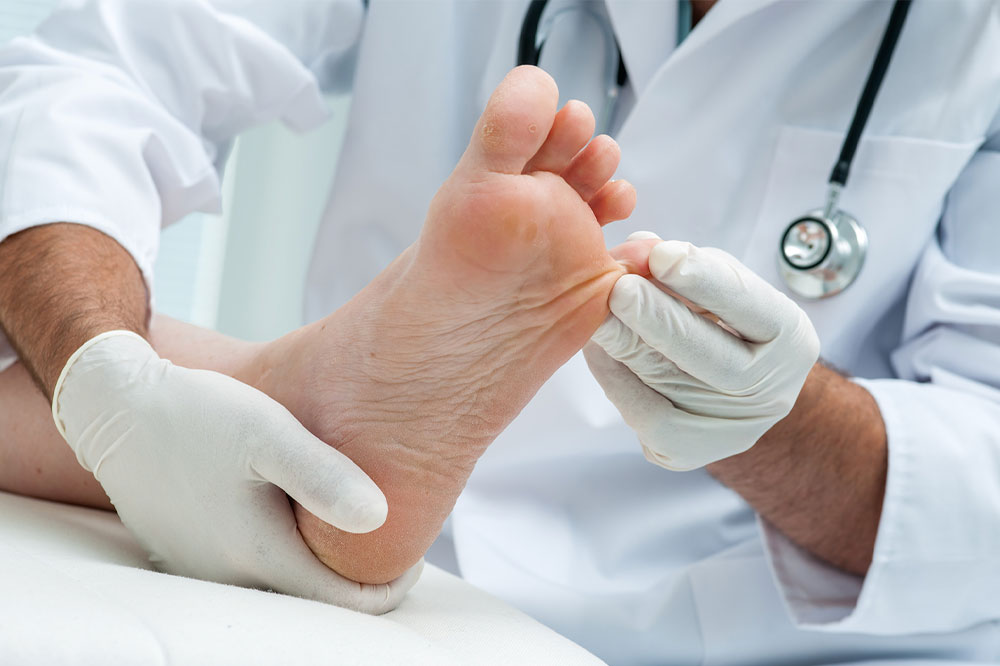Common Symptoms, Diagnosis, and Remedies of Nail Psoriasis

Experts believe that more than 3% of the adult population in the country, or roughly 7.5 million people, have psoriasis. People with psoriatic arthritis are more likely to develop nail psoriasis. The disease, which is caused due to an overactive immune system, develops in the region where the new nails grow. This condition doesn’t have a cure yet, but treatments, good hygiene, and some home remedies can help manage and alleviate the symptoms.
Nail Psoriasis
Nail Psoriasis is a non-contagious autoimmune disorder characterized by discoloration, pitting, and unnatural changes in one’s nails. Usually, normal skin can grow and shed fully in about a month. But during instances of nail psoriasis, the new cells grow too fast in only three to four days. It results in the cells accumulating on the skin’s surface rather than shedding.
Risk factors
Anyone can get nail psoriasis, but people over 40 with psoriasis arthritis or a family history of psoriasis are more vulnerable to the condition. Additionally, men are more prone than women to develop the disease.
Symptoms
The color and texture of healthy nails are consistent. Healthy fingernails and toenails often have pink nail plates, while the nail growing off the nail bed is ideally white. Any changes in the size, appearance, or shape of one’s nails may indicate nail psoriasis. Some of the common signs to look out for include the following:
Color changes
Any discoloration or spotting can be a sign of nail psoriasis. One may find that one’s nails have turned white, brown, or yellow or have tiny red spots underneath them.
Crumbling nails
One may experience thinning of nails that later crumble or get easily separated from one’s fingers or toes, causing pain.
Debris accumulation
Chalky white material or dead skin cells may accumulate beneath one’s nails. It can lift the nails off one’s skin. Alternatively, one may also find blood underneath them. Since nails grow slowly, cleaning the debris can take up to 6 months.
Onycholysis
People with nail psoriasis might observe their nails separating or falling off the nail bed easily and without injury. This symptom is often referred to as onycholysis.
Grooves
One may get ridges or horizontal grooves on the surface of one’s nails.
Pits or holes
One may discover minor dents or pinprick holes in one’s nails, also known as pits. They can be as shallow as 0.4 millimeters, like the tip of a pin, or as deep as 2 millimeters.
Thickening
Nail psoriasis patients may also develop a fungal infection that thickens their nails and make them breakable. If one discovers any abnormal changes in one’s nails, it’s advisable to consult a dermatologist. If left untreated, nail psoriasis can worsen and hamper one’s ability to use hand or walk.
Diagnosis
Nail psoriasis can be diagnosed with a physical examination of the affected areas. A healthcare professional can also dig up one’s family history of psoriasis. After the diagnosis, the doctor may grade the severity of one’s condition using the NAPSI index, which stands for the Nail Psoriasis Severity Index. The index divides one’s nails into four sections and closely examines the symptoms in each section. A low NAPSI score means that one’s condition is mild.
Home remedies for nail psoriasis
This condition doesn’t have a standard cure. The flare-ups of the disease can last throughout one’s life if adequate care is not taken. There are many home remedies and medical treatments available to manage flare-ups. Therefore, it’s advisable to consult a healthcare professional before using home remedies to avoid the risk of allergic reactions.
Aloe vera gel
The anti-inflammatory properties of the gel can provide relief to one’s nails and the areas surrounding them. It can be applied several times a day and even before bed.
Dead Sea salt
Adding Dead Sea salt to warm water and soaking one’s nails for a few minutes can ease the pain and heal the skin.
Capsaicin
Capsaicin is found in hot peppers and can relieve nail psoriasis symptoms. Avoid touching or rubbing one’s eyes while using capsaicin, as it irritates.
Turmeric
Turmeric is anti-inflammatory and anti-fungal, which can help treat nail psoriasis. Besides these remedies, one can wash one’s hands to avoid infections, moisturize the skin to avoid itchiness, wear gloves to avoid nail damage, and keep the nails trimmed. If one faces any onset of symptoms, it’s advisable not to use chemical-based colored nail paints.
Treatment options
Nail psoriasis can get difficult to manage without a combination of various therapies. So, one can discuss the treatment options with one’s healthcare professional and formulate a customized plan based on the severity of the condition.
Corticosteroids
A lotion, cream, or nail polish containing corticosteroids can be applied to the nail bed and matrix for four to six months to manage the symptoms.
Prescriptions
In severe cases of nail psoriasis, a healthcare professional may recommend liquids or other doses to be taken orally.
Phototherapy
This treatment method uses ultraviolet A (UVA) and ultraviolet B (UVB) light waves to treat the disease.
Laser therapy
The blood vessels under one’s nails may be targeted with a pulsed dye laser (PDL), which may lessen the severity of the condition. This treatment method is advised every six months.



